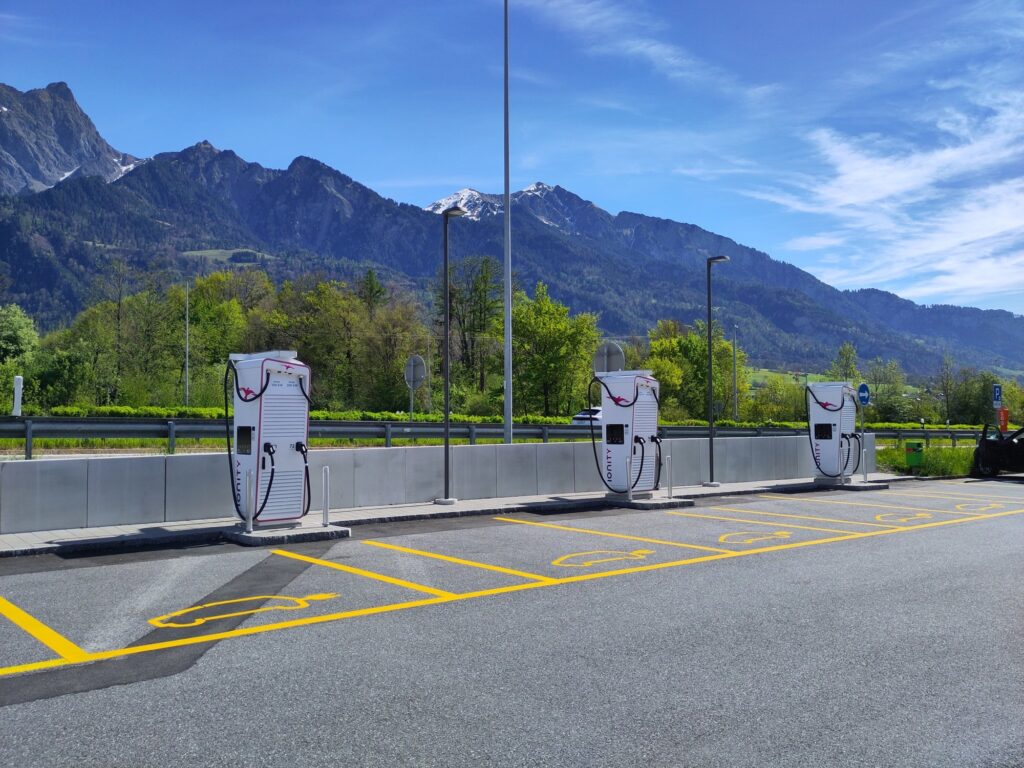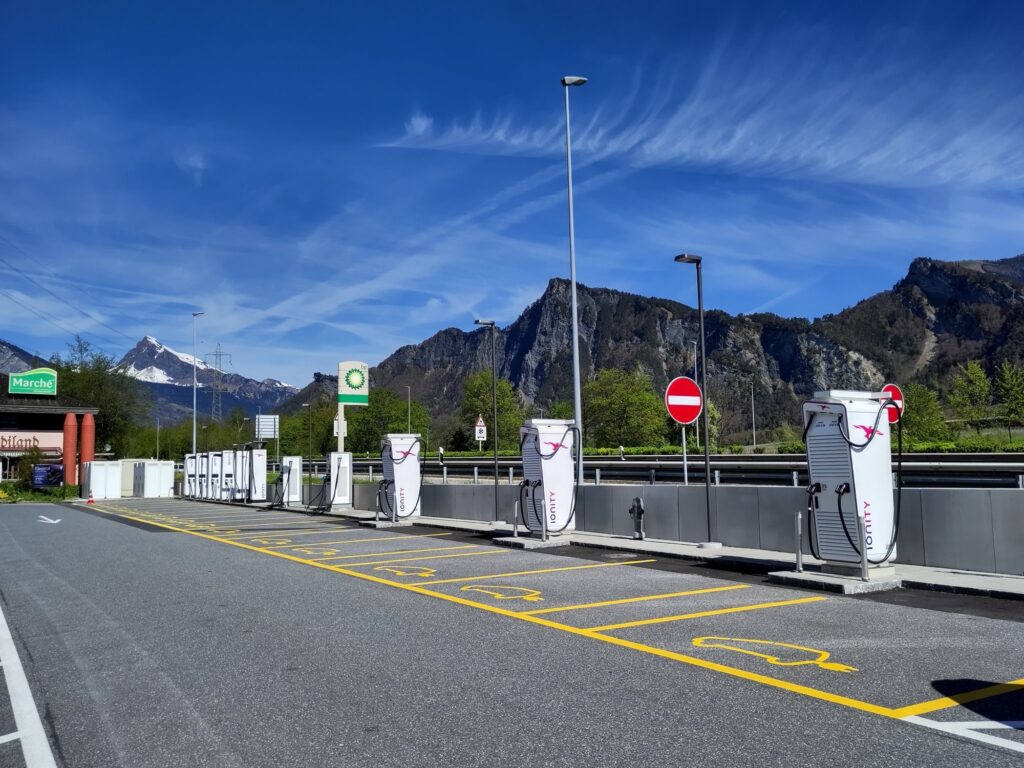A turning point for electric mobility in Switzerland
[ad_1]
Located on the Heidiland highway, famous for its breathtaking views of the Swiss Alps, the new IONITY charging site is positioned as the largest in Switzerland, marking a significant step forward in electric vehicle infrastructure. This development highlights Switzerland’s commitment to sustainable mobility and signals a crucial development in Europe’s ultra-fast charging network.
Advanced Capabilities and Technologies
The site has 12 ultra-fast charging stations, divided into 6 350 kW terminals and 6 200 kW terminals. These terminals allow extremely fast charging, reducing waiting time and making long journeys easier. 350 kW chargers, for example, can charge up to 80% of an electric car battery in less than 20 minutes, depending on the model and battery capacity.
Comparison with Existing Technologies
Among these modern installations, 50 kW MOVE chargers are also present, although they seem outdated compared to the new charging giants. These older chargers require more than an hour for a substantial recharge, showing a sharp contrast to the capabilities of new equipment.
Examples of Charging: Tesla Model Y and Renault Mégane E-Tech
To illustrate the capacity of these new chargers, let’s take the example of two popular vehicles: the Tesla Model Y and the Renault Mégane E-Tech.
Tesla Model Y
- Battery capacity : Around 75 kWh
- Charging at a 350 kW terminal : Can reach 80% in around 15 minutes thanks to its maximum charging capacity of 250 kW.
- Charging at a 200 kW terminal : Reaches 80% in approximately 20 to 25 minutes.
Renault Mégane E-Tech
- Battery capacity : Around 60 kWh
- Charging at a 350 kW terminal : Reaches 80% in about 30 minutes, although the maximum power supported is 130 kW.
- Charging at a 200 kW terminal : Takes approximately 35 minutes to reach 80% charge.
Implications for Users and the Energy Transition
This development is crucial to encouraging the adoption of electric vehicles, providing a practical solution to battery range anxiety. It also reflects the objectives of Swiss energy policy to reduce dependence on fossil fuels and CO2 emissions.
Future Outlook
The continued expansion of such facilities is essential not only in Switzerland but also across Europe, to support a more sustainable future. The Heidiland installation is an example of the potential of ultra-fast charging stations to transform travel habits and drive a global ecological transition.
Photo gallery



Conclusion
The Heidiland charging site symbolizes significant progress in electric mobility. Not only does it provide fast charging capability for various vehicle models, but it also represents a commitment to a greener future. As electric vehicle technology evolves, infrastructure follows suit, redefining the standards of eco-friendly travel.
[ad_2]
Source link
